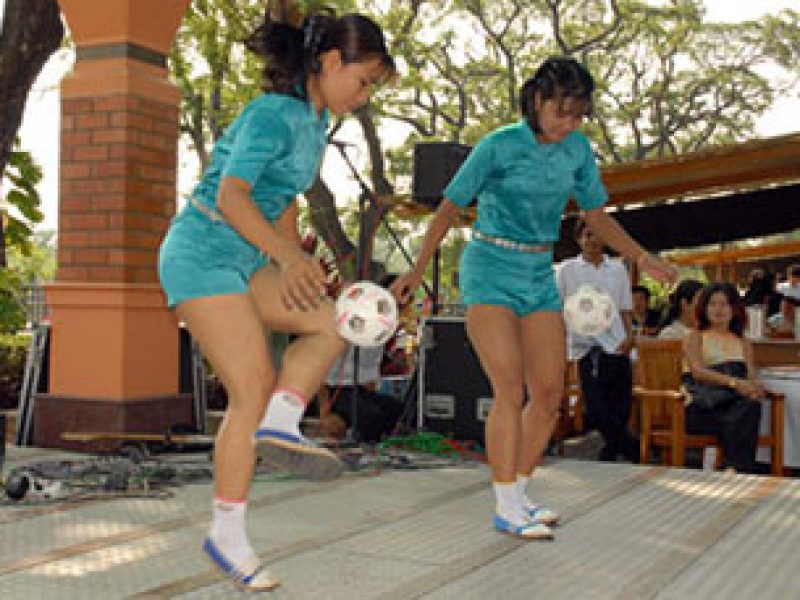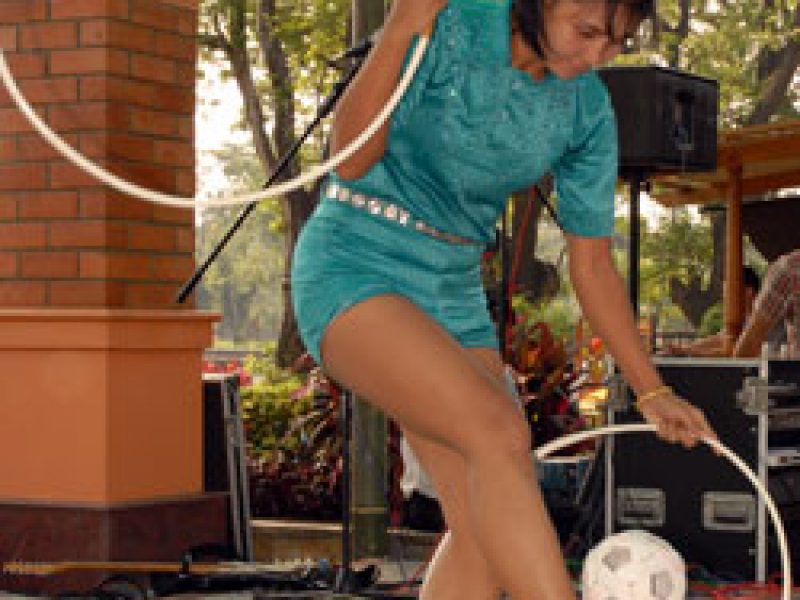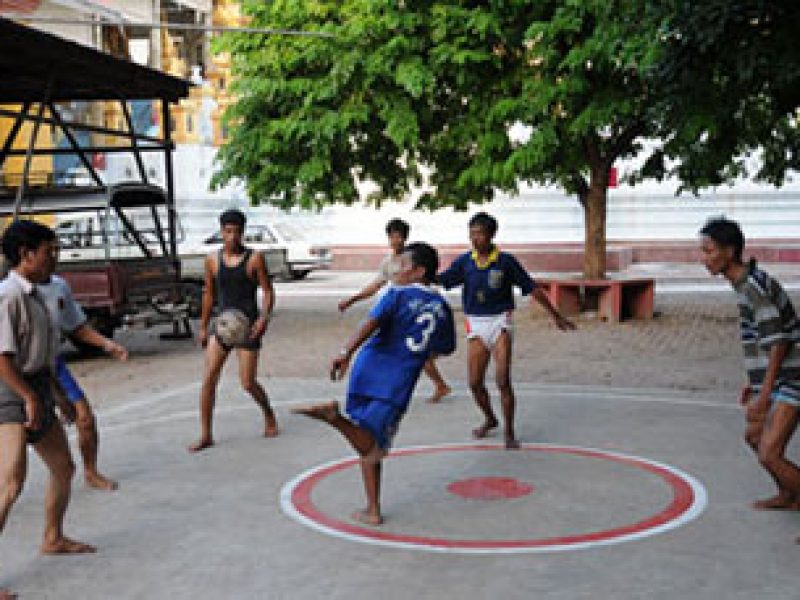Chinlon – Myanmar Traditional Sport. Chinlon is a cane ball composed of wicker-work. Cane or rattan. a wild creeper which grows profusely in many forests of Myanmar is a very resilient fiberous gift of nature which Myanmar people have been using for various purposes since time immemorial. In olden days houses in rural areas were mostly built of bamboo. thatch or palm leaves and rattan was used instead of iron nail for tying the structure intact. Strips of cane or rattan are interwoven in bands into a ball of four inches. a little more or less in diameter leaving twelve pentagonal holes. Very light but resilient chinlons are cheap and easily available at any village stall and a chinlon lasts quite long.
Traditionally playing chinlon was strictly a man’s pastime for exercising the body when the back and limbs got cramped due to long sitting. standing or working. But since post-war times the fairer gender has broken this masculine monopoly to display feminine body elasticity and skill in playing it.


Because chinlon is played basically with foot and other parts of the body – head. shoulder. elbow. knee. heel. sole etc. except for the hands. foreigners look upon it as Myanmar football. But there is no goal to shoot in chinlon playing and no fixed number of players needed to play it. The main object of chinlon playing is to keep it as long as possible in the air without touching it with the hand. It may be played by a single individual all by himself or by a team of players in circle. catching the chinlon as it comes round their way and keeping it as long as possible in the air by tossing it up with leg. heel. foot. sole. knee. shoulder. head but not with the hand. Players usually play with bare feet and have their waistcloths (longyi) tucked up close round the middle. But to day both men and women players wear shorts and canvas shoes. For men. chinlon playing provides a good opportunity to show off their masculine physical beauty especially if the body. thighs. hands and chest are well tattooed.
It is so nice or even exciting to watch a good player or a team of players in circle. standing on one leg all the time. taking every possible posture and movement to keep the chinlon in the air or to prevent it from touching the ground. giving one another difficult strokes. negotiating by tossing. kicking and bouncing – all tactical movements. and spectators applauding when they appreciate skill and stroke of the players. If chinlon is played as an entertainment at a festival. it is accompanied by music. A band of percussion and wind instrumentalists continuously play while the chinlon play is on. and music changes its tempo in harmony with the movements of chinlon and players. A skilful player can play with four to eight chinlons using all possible tactics to keep them on or around his or her body.
When and how chinlon originated in Myanmar is an academic question to be addressed by researchers. But a silver chinlon was discovered enshrined in the relic chamber of Baw Baw Gyi Pagoda at an old Pyu City “Sre Kestra” near Pyay. There are also references to chinlon and chinlon play in folk songs and literature. Besides quite a few books on chinlon and techniques of chinlon playing have appeared in the vernacular language. In the British colonial days an account of chinlon play was given by C.A. Gordon in 1874. Some foreign globetrotters mention it as one of the native games in their writings. There was one British high-ranking official cum writer Sir J.G. Scott who fell in love with chinlon and who had his thighs tatooed and played chinlon with Myanmars. But in his book The Burman. His Life and Nations which he penned with a nom-de-plume “Shway Yoe”. Scott disagrees with those foreigners who look upon chinlon as a game. for he thinks that a game is a striving between two or more competitors for supremacy. Chinlon is designed simply to exercise the body.

If Shway Yoe were still alive he would be happy to find that his favourite chinlon has developed into a Myanmar game. gaining popularity at home and abroad. In 1908 a Sports Competition was held at the Rangoon (Yangon) Government High School Chinlon was first introduced as a game and competition was by a marking system. In 1940. the All Burma (Myanmar) Chinlon Competition was held at BAA (Burma (Myanmar) Athletic Association. When the Second World War broke out. endeavours to further develop chinlon came to a halt. But on 29. June 1953 the All Burma (Myanmar) Chinlon Conference was held at Rangoon (Yangon). Delegates from 33 districts attended the conference and they unanimously laid down and approved the game law and regulations whereby chinlon games were prescribed by the chinlon game law. namely (1) Individual competition for chinlon tossing. Single (2) Individual competition for chinlon tossing. Double (3) Chinlon competition by team of players in circle and (4) Chinlon competition by team of players in circle for displaying skill. posture and beauty of style. All together 15 styles were registered by the game law according to the movement of chinlon (1) fall (2) rise (3) give (4) take (5) control (6) toss (7) turn-up (8) coming in (9) going out (10) cornering (11) attack (12) cut (13) support (14) touch the ground and (15) up lift.
There are many details regarding grades of competition. size of chinlon. measurement of circle for team players. terms for postures. styles and tactics and chinlon jargon. Myanmars are football enthusiasts but chinlon is still in their heart.
